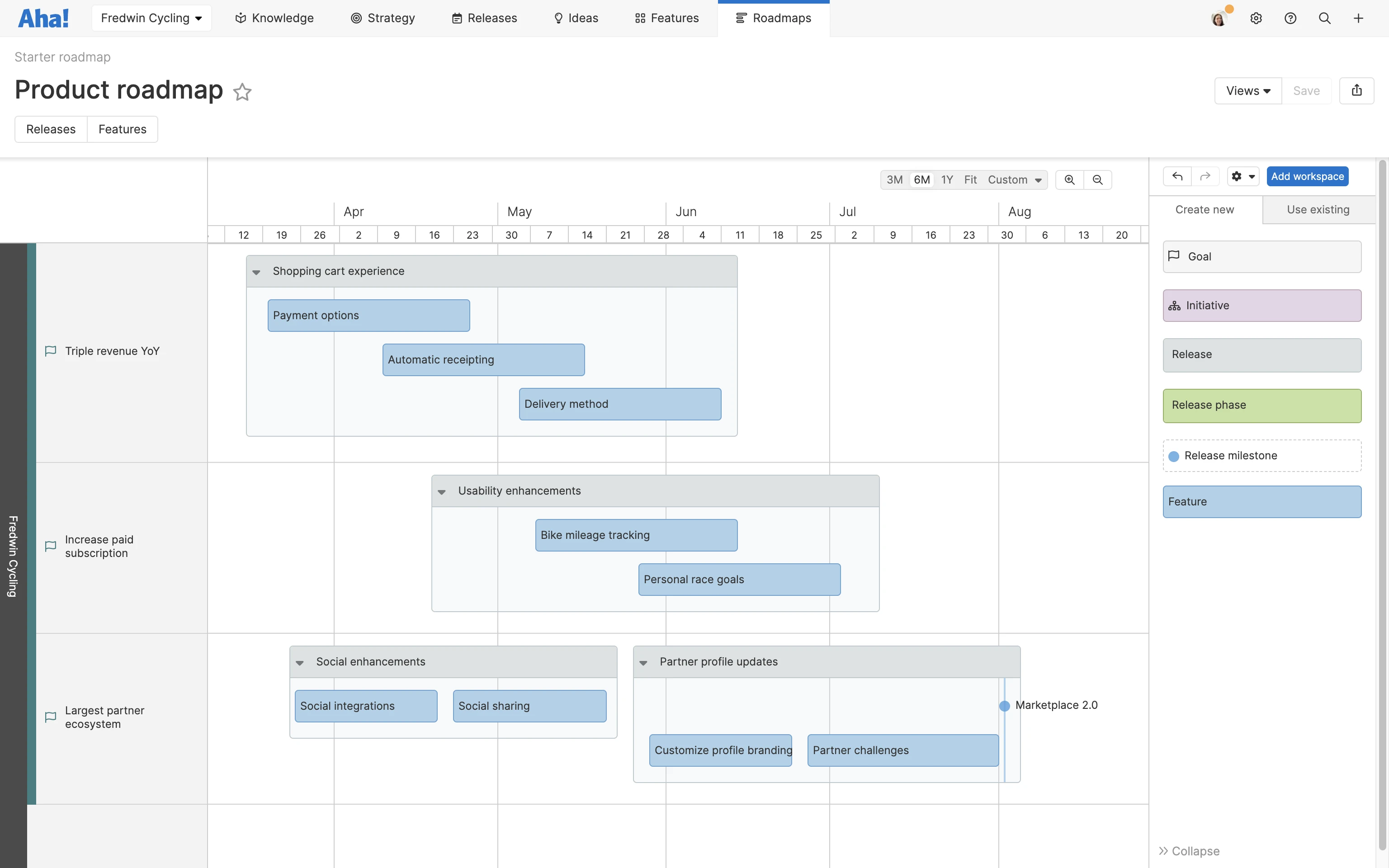Responsibilities of a product manager
Let's zero in on a product manager's core responsibilities. Although the scope of work is broad, your day-to-day responsibilities can typically be broken down into the following six areas:
1. Setting strategy
At the highest level, you are responsible for setting your product's vision and strategic direction. You need to be able to clearly articulate the business case of a given initiative or feature and then connect back to your product vision and goals. Doing so helps your team understand the "why" behind what you are building.
Strategic planning involves laying out major areas of investment so you can prioritize what matters most and achieve your product goals. You also own the product roadmap — a timeline that visualizes what you will deliver and when.
2. Evaluating ideas
Ideas fuel successful products. Product managers are responsible for crowdsourcing, developing, and curating ideas that will deliver value to customers. You own the organization's idea management process, determining which ideas should be promoted to your backlog and propelling product strategy forward.
To this end, product managers also ensure that requests are integrated into the product planning and development process. You communicate the status of ideas back to your customers, partners, and internal teammates who submitted them — closing the feedback loop.
3. Prioritizing features
Product managers are responsible for defining feature requirements and the desired user experience. You work closely with engineering on the technical specifications, and ensure that cross-functional teams have all of the information they need to deliver a complete product to market.
You prioritize features by ranking them against strategic goals and initiatives. Product managers have to make difficult trade-off decisions based on the value a new feature will deliver to your customers and the business.
At Aha! we call this value-based product development. This approach helps product teams prioritize features that create the most value for the least amount of effort. Estimating the value of new functionality is generally based on your strategic goals, the team effort required, and future customer benefit. The purpose is to look beyond daily tactical discussions and elevate your thinking to the overall worth of what you are building.
4. Defining releases
Product managers translate product strategy into planned work — defining what you will build and when you will launch it. This holds true no matter which development methodology your engineering team uses.
You are responsible for release process. You are also responsible for managing cross-functional dependencies — all of the activities required to bring new products, features, and functionality to market. This involves bridging gaps between different functions within the company and aligning key teams including marketing, sales, and customer support.
5. Building and sharing strategic roadmaps
Creating and updating your product roadmap is one of the most powerful communication tools you have as a product manager. A product roadmap visualizes how your product will achieve your business objectives and helps keep work on track.
There are many different types of roadmaps you can create depending on who you are presenting to and what you are trying to convey. Executives tend to want to know the high-level plans, while engineers and designers will need to understand the exact timing and sequencing of important work.
An example of a product roadmap built in Aha! Roadmaps that highlights strategic goals and initiatives — plus the work that will be done to accomplish them.
6. Analyzing and reporting on progress
Great product managers are laser-focused on results — for customers and for the business. You need a complete view of the team's progress towards goals to understand how your product is performing.
This is an example list of questions that help track team progress
Team efficiency
How are the most important initiatives progressing?
Which inefficiencies or blockers need to be addressed?
Are we satisfied with team velocity?
Are there any capacity issues that need to be resolved?
Product usage
What product features are the most and least used?
Where are users getting stuck and abandoning our offering?
What percentage of trials convert to paid accounts?
How many accounts are growing vs. how many are shrinking?
Answering these questions well requires deep curiosity — you need to dig into both qualitative and quantitative data. Begin by tracking team progress with sprint burndown charts and velocity reports. And you can evaluate product usage with adoption and retention reports. No matter what kind of report you select, make sure it tells an accurate story of how you are meeting your product goals.
Related:





